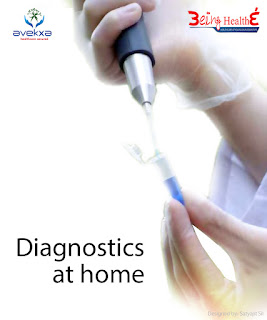Diagnostics at home :
Diagnostic
and monitoring device is one of the biggest product segments of global home
healthcare market with highest share. Home diagnostics is gaining recognition
as gadgets drives down the cost and provides a reliable degree of accuracy.
With increasing health awareness among people, increase in number of young and
geriatric people diagnosed with chronic diseases such as diabetes, cardiac
disorders and respiratory diseases,the demand for home diagnostics is expected
to grow even more in the next few years.
People
buy their at-home diagnostic tests and health-monitoring devices at pharmacies
or online. At home diagnostic products include blood pressure monitors; blood c
holesterollevel monitors; heart-rate monitors; blood glucose monitors, A 1 C
test kits, and monitoring supplies (including lancets and test strips); home
pregnancy and ovulation tests; and kits that require a blood or other tissue
sample to be sent out for testing, such as test kits for blood cholesterol
levels, HIV, hepatitis C, and DNA tests that can be used to prove paternity.
The latest to be added in this category is at-home cancer testing device
for
screening lung, breast and prostate cancer. Some of the key industry
participants in global home diagnostic market includes 3M Health Care, Bayer
AG, Abbott Laboratories, Phillips Healthcare, Cardinal Health, Inc., GE
Healthcare, Gentiva Health Services, Inc., Johnson & Johnson Services,
Inc., F. Hoffmann-La
Roche Ltd., Medtronic, Inc., Omron
Healthcare,
Inc. and Invacare Corporation among others.
Currently
the largest market for home tests is blood glucose monitoring (BGM). When
tracing the history of home testing it can be seen that some of the technology
developments, from initial urine dipsticks to finger-stick testing, are where smaller
and smaller amounts of sample are now required. Most home diagnostic systems
provide a single test result; but in future a panel of tests might be more
applicable and that the
output
of these results would need to be displayed in an easy to understand manner for
the home user.
Alongside
the technology improvements, more recently greater focus is seen on providing
better data for the patient to manage their disease. Devices that now provide
the calculation of bolus amounts of insulin that the patient should take based
on their carbohydrate intake and blood glucose are becoming available. Easier
analysis of the results of testing and sharing of that data have become more
commonplace.





